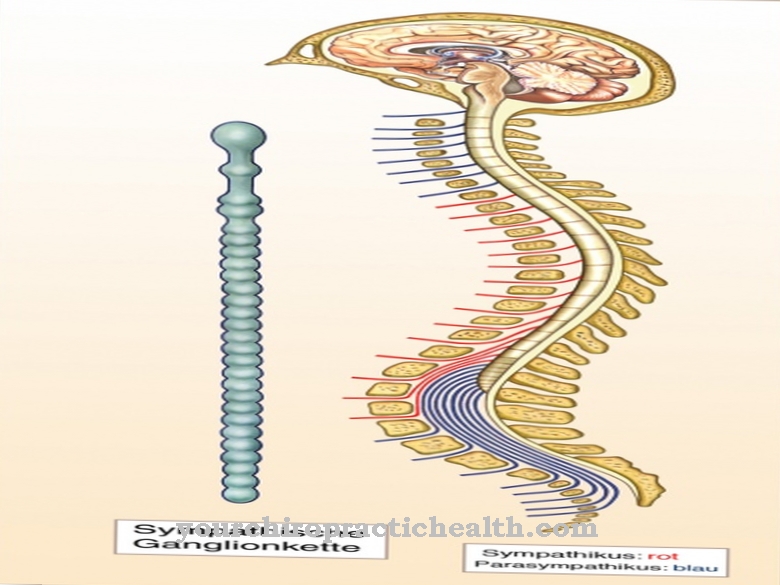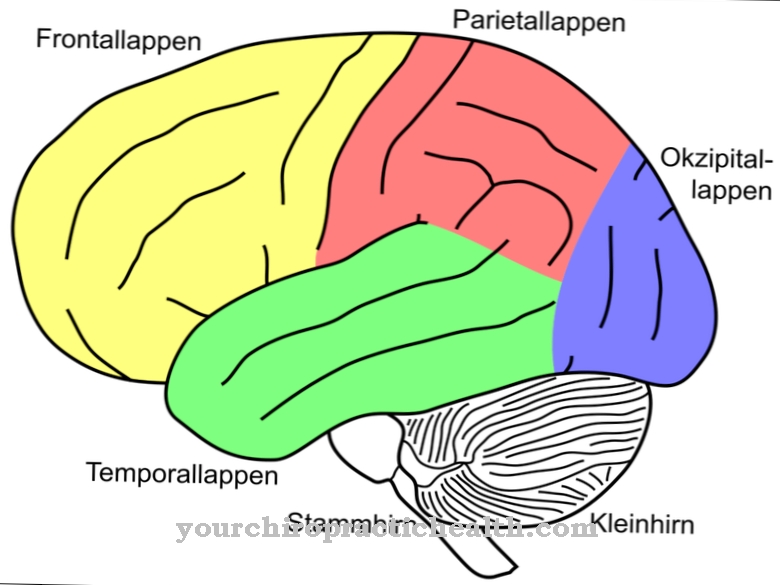A joint is a flexible connection that connects at least two bones in such a way that movement is possible. There are different types of joints as well as the possibility that joint-like connections exist, which are then referred to as false joints.
What are joints?
Be in anatomy Joints, Articulationes called, so described that it is a connection between two bony or cartilaginous parts of the skeleton, separated by a joint space.
However, the human skeleton has several different joint shapes that differ in structure and function.
Typical joint shapes are:
- Ball joint
- Egg joint
- Saddle joint
- Hinge joint
- Wheel joint
Anatomy & structure
Fake jointscalled synchondroses or articulationes cartilaginae are bone connections that have no interruption, i.e. no joint space and, as connective tissue or cartilaginous connections, only have limited mobility.
Often these are growth zones or connections between bone parts, which should also have a certain degree of mobility despite being very stable. Examples are the cartilaginous connections between the ribs and the breastbone, the pubic symphysis or the connective tissue connection between the ulna and the radius.
If the cartilage is completely transformed into bony structures after the growth is complete, these connections are called synostoses.
Real joints, diarthrosis, or discontinuous joints, show an interruption between the bones that are involved in the joint. This interruption is known as the joint gap, which is more or less strong, depending on the function of the joint. The joint space separates the joint surfaces covered with articular cartilage from one another. The real joint is surrounded by a joint capsule made up of two layers.
The inner synovial membrane and the outer fibrous membrane form the capsule, which tightly encloses the joint and forms a closed cavity inside, the joint cavity. The joint capsule is often reinforced by ligaments, the so-called capsular ligaments. To enable mobility and joint play, the joints inside the capsule are filled with a viscous fluid, the synovial fluid. Examples of real joints are the ankle, knee or hip joints.
Functions & tasks
Furthermore can Joints also differentiate according to their shape, function or mobility. Hinge joints like the elbow joint can only be moved within one body axis, for bending or stretching.
The knee joint, on the other hand, which is classified as a swivel-slide joint, can be moved in two axes. In addition to flexion and extension, internal and external rotation are also possible here. If one speaks of ball joints, then the hip and shoulder joint are relevant examples that can be moved in all three body axes. In addition to the movements of flexion and extension, rotation as well as spreading and tightening are possible here.
Depending on the type of joint, different forms of movement are possible and carried out. The joints are functionally limited by the structures surrounding them such as muscles, bones or the capsule.
The thumb saddle joint plays a special role here. It distinguishes the function of the human hand from that of other mammals. Because the structure and mobility of the joint enable the so-called opposition, which is also known as the tweezer grip. The mobility of this joint resembles a ball joint due to the further possibilities of movement.
Diseases
Known diseases of the Joints are osteoarthritis in which the joint shows wear and tear in a manner that is not age-appropriate. There are several ways that osteoarthritis can be caused. In many cases, constant excessive or incorrect loading of a joint is responsible for the symptoms. You can often find examples in the area of the knee and hip joints.
Inflammation or injuries can also cause arthrosis, with joint wear and tear being a consequence of the previous illness. Capsule or ligament injuries as a result of an accident or trauma are also often referred to as joint injuries. The best-known example here is the cruciate ligament tear in the knee joint, whereby the actual joint is not damaged, but only structures within the joint.
Direct joint involvement often occurs in the context of fractures when the joint surfaces are also affected and the joint cartilage is injured or parts of the joint surfaces break away due to the force of force. More joint diseases, arthropathies, can be found in the area of joint inflammation that is known as arthritis. Since the causes are often unclear here and must be clarified by differential diagnosis, there are different names, such as polyarthritis or gout.
Special forms of joint diseases are, for example, hallux valgus, the pathological misalignment of the big toe, or chondropathia patellae, in which the cartilaginous back of the kneecap is degeneratively changed and causes pain and movement restrictions.
Typical & common diseases
- arthrosis
- Joint inflammation
- Joint pain
- Joint swelling
- Rheumatoid arthritis
















.jpg)
.jpg)



.jpg)






